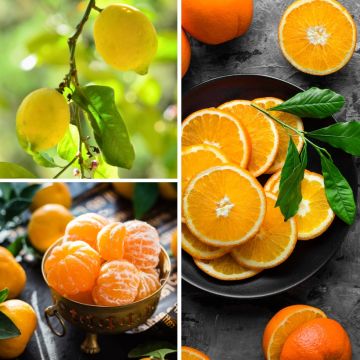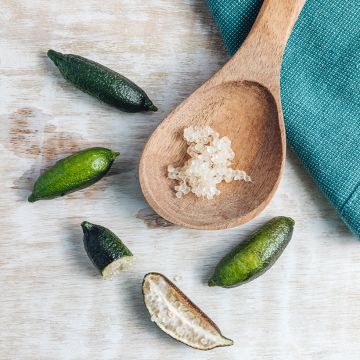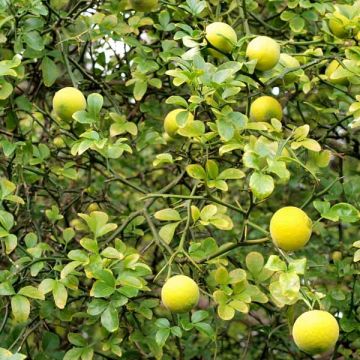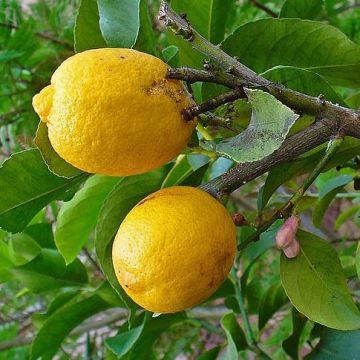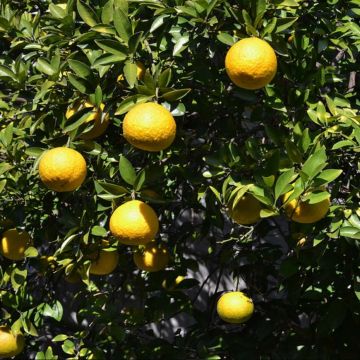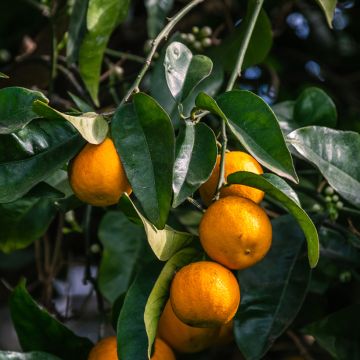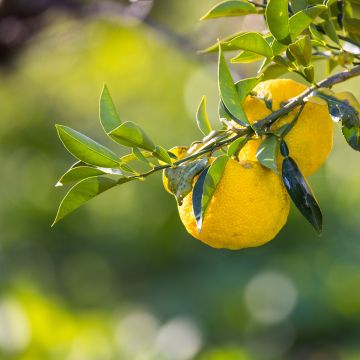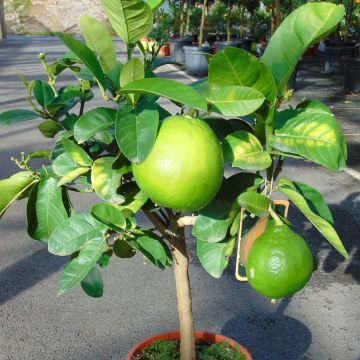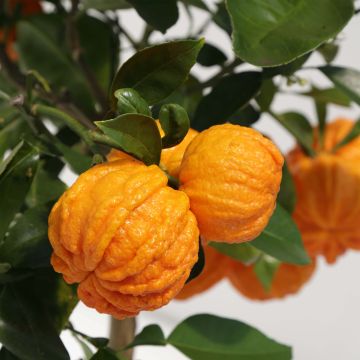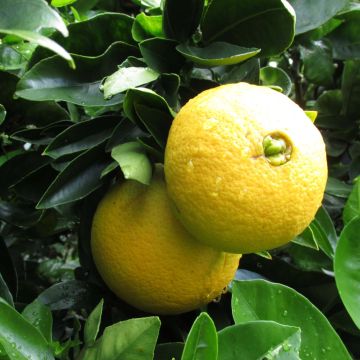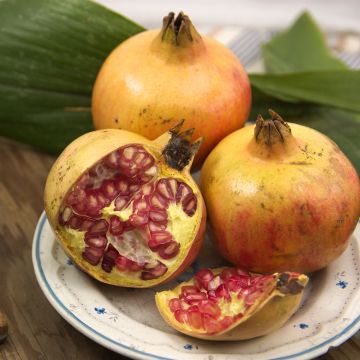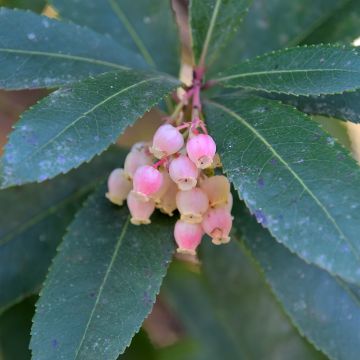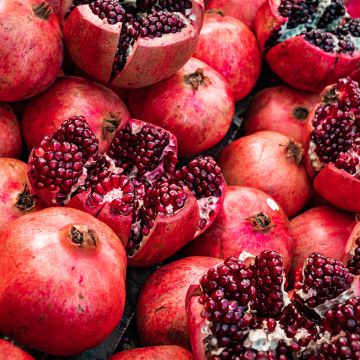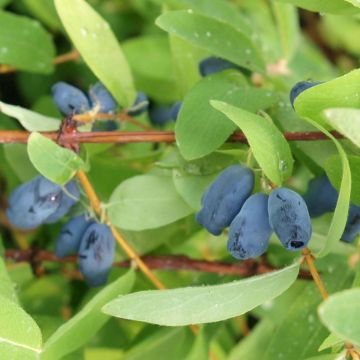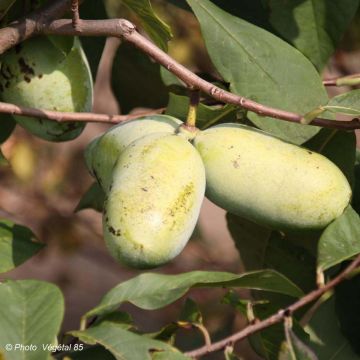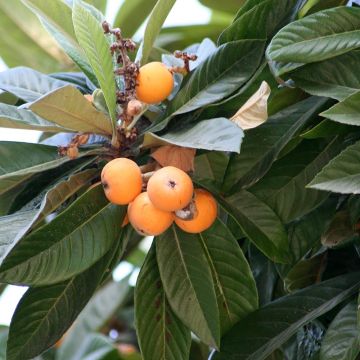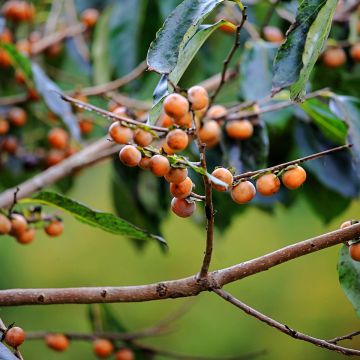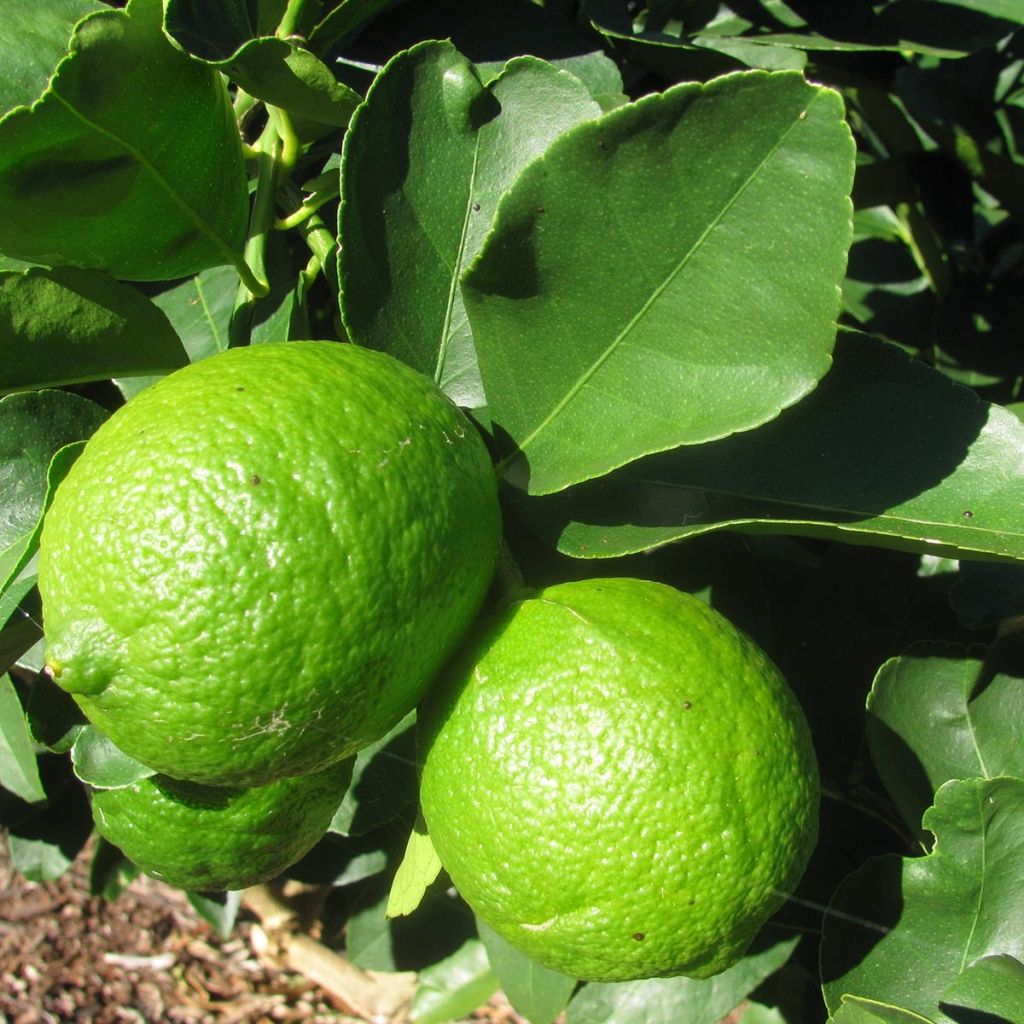

Grand Citron vert - Citrus latifolia
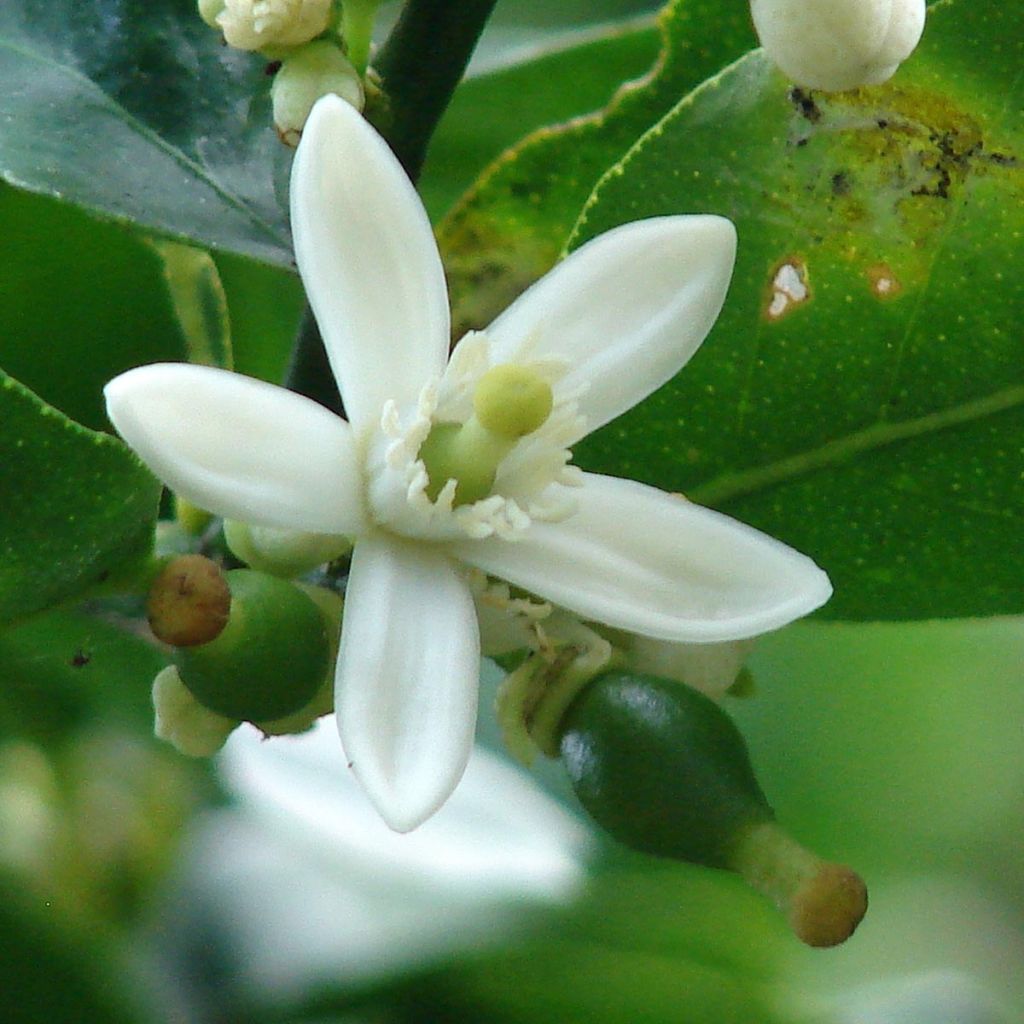

Grand Citron vert - Citrus latifolia
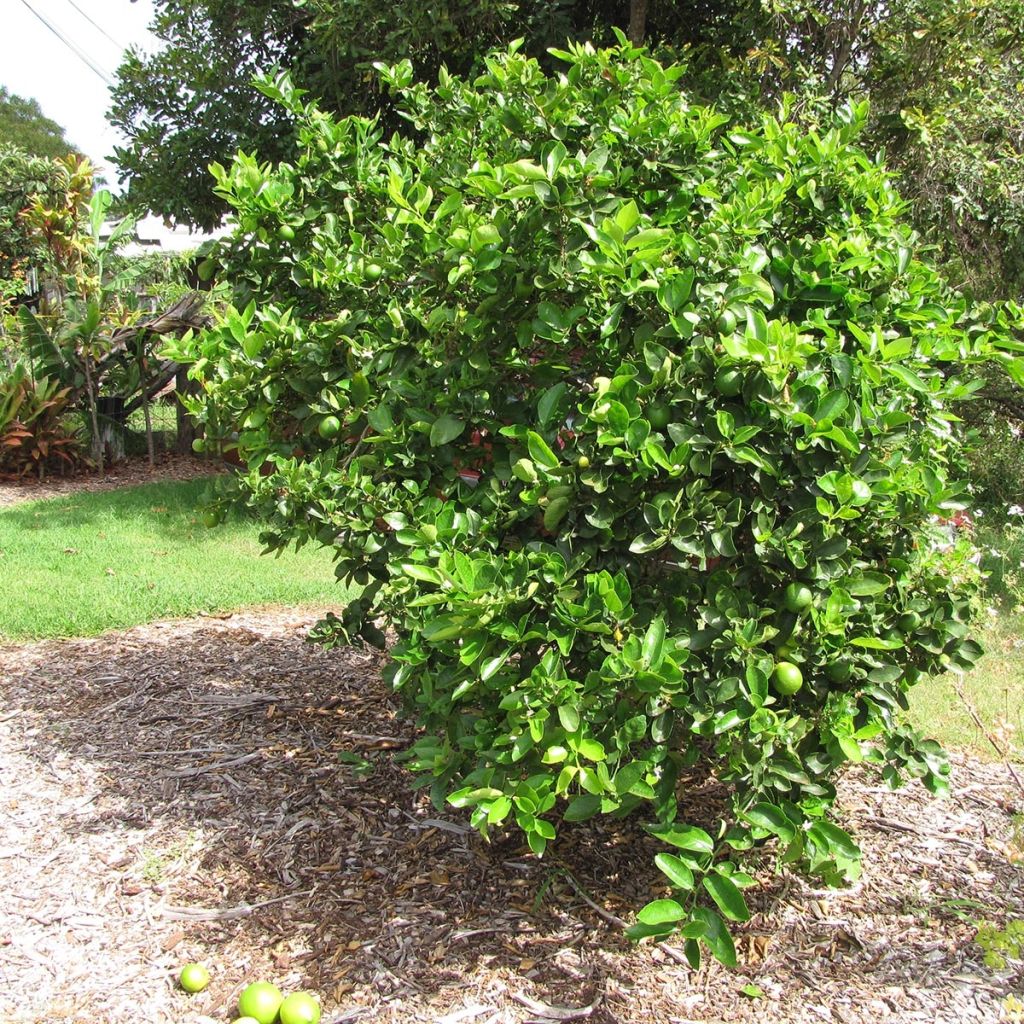

Grand Citron vert - Citrus latifolia
Large Lime - Citrus latifolia
Citrus x latifolia
Persian lime, Tahiti lime
Nice bush already quite bushy, just one downside: despite extremely careful packaging, an apical stem was broken and I had to trim it cleanly. I don't think this will affect its growth. SPECIAL MENTION for the packaging of the entire parcel, which includes two bushes, perennials, and several plug plants—all the plants were packed very carefully, with cardboard protections, and the pots secured in place with stakes.
ELISAD, 22/05/2025
Special offer!
Receive a €20 voucher for any order over €90 (excluding delivery costs, credit notes, and plastic-free options)!
1- Add your favorite plants to your cart.
2- Once you have reached €90, confirm your order (you can even choose the delivery date!).
3- As soon as your order is shipped, you will receive an email containing your voucher code, valid for 3 months (90 days).
Your voucher is unique and can only be used once, for any order with a minimum value of €20, excluding delivery costs.
Can be combined with other current offers, non-divisible and non-refundable.
Home or relay delivery (depending on size and destination)
Schedule delivery date,
and select date in basket
This plant carries a 6 months recovery warranty
More information
We guarantee the quality of our plants for a full growing cycle, and will replace at our expense any plant that fails to recover under normal climatic and planting conditions.

Description
Citrus x latifolia is commonly known as Persian lime, Tahiti lime, Persian lime tree, or lime with big fruit due to the large size of its green limes. It is a vigorous and productive citrus tree that is less demanding and easier to grow than its small-fruited cousin. It produces beautiful seedless limes with thin skin that is sometimes difficult to peel. Their juicy and fairly sweet flesh is highly valued in refreshing drinks. This citrus tree bears slightly fragrant white flowers in spring and autumn. Its limes, measuring 5 to 6cm (2in) in diameter, reach maturity 5 to 7 months later. It can be cultivated in a large pot to be stored in a heated greenhouse in winter, or in open ground in warm regions unaffected by frost.
Citrus x latifolia belongs to the Rutaceae family, like all citrus trees. Its origins are not well defined, but it is likely a hybrid between a lemon tree and a sour lime tree. This sterile hybrid does not produce seeds. Imported to California from Tahiti, it is believed to have been brought from North Africa to Brazil by the Portuguese. It is a slightly thorny shrub, which develops a short single trunk topped by a well-branched crown.
In open ground, the Persian lime is a small tree that reaches a height of 4m (13ft), but rarely exceeds 2m (7ft) in height and 1m (3ft) in width when grown in a pot. Its branches are short and bear many short and sharp thorns. Its hardiness depends on the rootstock used, but the variety itself can tolerate temperatures down to -4°C (24.8°F). It can be planted in open ground on mild coastlines or, at a stretch, in the hottest and mildest areas of the Atlantic coast. Elsewhere, it should be grown in pots and stored away at the first signs of cold weather. Primarily cultivated for its fruits, the Persian lime blooms abundantly in April, more sporadically during the summer, and again in October-November. It produces white flowers with 5 petals measuring 4 to 5cm (2in) in diameter, slightly tinged with pink. They emit a light neroli fragrance, characteristic of citrus. These give way to oval to round-shaped fruits like yellow lemons, measuring 6 to 7cm (2 to 3in) in diameter. Their very thin, smooth skin starts off dark green and later lightens, often taking on a green-yellow hue when fully ripe. The white-greenish and translucent fruit pulp is juicy and slightly acidic, with a pleasant fragrance. The fruits are harvested before they start turning yellow. The evergreen leaves are highly aromatic when crushed. They are ovate, leathery, large, and intensely green in colour.
Citrus latifolia is easier to grow than the classic lime tree. It is extensively cultivated in warm temperate countries (Florida, Mexico, Brazil, Spain, Portugal), primarily for juice production, but also for its essential oil. Its fruit is used in the same way as all green limes in cooking. Its juice is low in acid, making it perfect for preparing refreshing drinks mixed with pineapple and papaya, for example. It pairs well with the aroma of coconut. Its peel also adds fragrance to olive oil.
Most citrus trees thrive in open ground in warm coastal regions where they find the year-round heat they require. To fruit well, they must not lack water or nutrients. Citrus latifolia is not very hardy and starts to suffer from cold temperatures below -3°C (26.6°F). It is a self-fertile bush, meaning that a single individual is sufficient for complete pollination and fruiting.
Report an error about the product description
Large Lime - Citrus latifolia in pictures
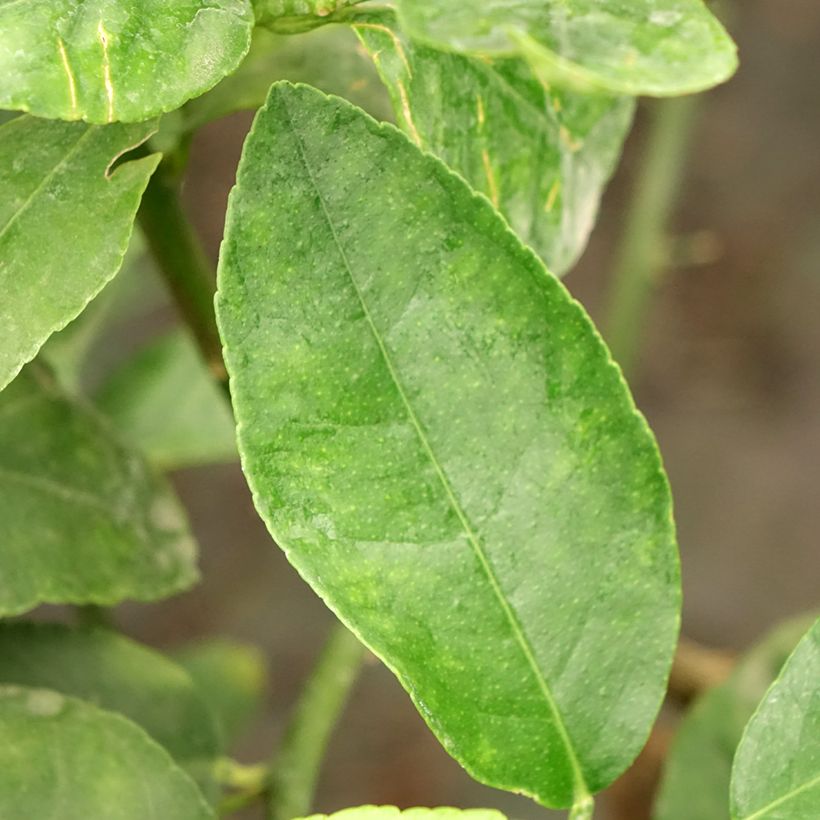



Plant habit
Fruit
Flowering
Foliage
Botanical data
Citrus
x latifolia
Rutaceae
Persian lime, Tahiti lime
Southeast Asia
Other Citrus trees
View all →Planting and care
Planting in open ground
It prefers neutral to slightly acidic, non-calcareous soils. Depending on the rootstock used, it will be more or less cold-resistant and more or less tolerant to limestone. It can only be planted in open ground if you reside on a Mediterranean or South Atlantic coastal strip, spared from frost, as the hardiness of this citrus tree does not exceed -4°C (24.8°F) and it requires a lot of warmth to flower and fruit. The best time to plant is in early spring, in March and April. Do not bury the collar. Citrus trees are naturally greedy and require water to fruit well. In any case, consider amending with well-decomposed compost or "special citrus" fertiliser. Choose a sunny but not scorching location for your bush in a sheltered spot to prevent leaf drying and premature fruit drop. Place it in a location protected from sea spray.
Pot planting
In all other regions, it should be planted in a pot that you can keep in a slightly heated greenhouse or conservatory, frost-free, in an atmosphere that is not too dry. It will appreciate being outdoors as soon as there is no more frost, letting it enjoy the summer months. Pot planting or repotting takes place at the end of summer. Choose a pot slightly larger than the root system, as citrus trees do not like to feel cramped. Moisten the root ball well. To improve drainage, line the bottom of the pot with clay pebbles. Loosen the root ball and mix two-thirds garden soil with one-third "special citrus" compost. Water generously. Choose pots made of clay or breathable material.
Citrus trees need a lot of water to thrive. It should be watered every day with slightly or non-calcareous water, and the soil should always remain moist. Likewise, make sure to regularly provide it with the fertiliser it needs: every 6 months for slow-release granular fertiliser or every 3 waterings for liquid fertiliser.
Planting period
Intended location
Care
-
, onOrder confirmed
Reply from on Promesse de fleurs
Similar products
Haven't found what you were looking for?
Hardiness is the lowest winter temperature a plant can endure without suffering serious damage or even dying. However, hardiness is affected by location (a sheltered area, such as a patio), protection (winter cover) and soil type (hardiness is improved by well-drained soil).

Photo Sharing Terms & Conditions
In order to encourage gardeners to interact and share their experiences, Promesse de fleurs offers various media enabling content to be uploaded onto its Site - in particular via the ‘Photo sharing’ module.
The User agrees to refrain from:
- Posting any content that is illegal, prejudicial, insulting, racist, inciteful to hatred, revisionist, contrary to public decency, that infringes on privacy or on the privacy rights of third parties, in particular the publicity rights of persons and goods, intellectual property rights, or the right to privacy.
- Submitting content on behalf of a third party;
- Impersonate the identity of a third party and/or publish any personal information about a third party;
In general, the User undertakes to refrain from any unethical behaviour.
All Content (in particular text, comments, files, images, photos, videos, creative works, etc.), which may be subject to property or intellectual property rights, image or other private rights, shall remain the property of the User, subject to the limited rights granted by the terms of the licence granted by Promesse de fleurs as stated below. Users are at liberty to publish or not to publish such Content on the Site, notably via the ‘Photo Sharing’ facility, and accept that this Content shall be made public and freely accessible, notably on the Internet.
Users further acknowledge, undertake to have ,and guarantee that they hold all necessary rights and permissions to publish such material on the Site, in particular with regard to the legislation in force pertaining to any privacy, property, intellectual property, image, or contractual rights, or rights of any other nature. By publishing such Content on the Site, Users acknowledge accepting full liability as publishers of the Content within the meaning of the law, and grant Promesse de fleurs, free of charge, an inclusive, worldwide licence for the said Content for the entire duration of its publication, including all reproduction, representation, up/downloading, displaying, performing, transmission, and storage rights.
Users also grant permission for their name to be linked to the Content and accept that this link may not always be made available.
By engaging in posting material, Users consent to their Content becoming automatically accessible on the Internet, in particular on other sites and/or blogs and/or web pages of the Promesse de fleurs site, including in particular social pages and the Promesse de fleurs catalogue.
Users may secure the removal of entrusted content free of charge by issuing a simple request via our contact form.
The flowering period indicated on our website applies to countries and regions located in USDA zone 8 (France, the United Kingdom, Ireland, the Netherlands, etc.)
It will vary according to where you live:
- In zones 9 to 10 (Italy, Spain, Greece, etc.), flowering will occur about 2 to 4 weeks earlier.
- In zones 6 to 7 (Germany, Poland, Slovenia, and lower mountainous regions), flowering will be delayed by 2 to 3 weeks.
- In zone 5 (Central Europe, Scandinavia), blooming will be delayed by 3 to 5 weeks.
In temperate climates, pruning of spring-flowering shrubs (forsythia, spireas, etc.) should be done just after flowering.
Pruning of summer-flowering shrubs (Indian Lilac, Perovskia, etc.) can be done in winter or spring.
In cold regions as well as with frost-sensitive plants, avoid pruning too early when severe frosts may still occur.
The planting period indicated on our website applies to countries and regions located in USDA zone 8 (France, United Kingdom, Ireland, Netherlands).
It will vary according to where you live:
- In Mediterranean zones (Marseille, Madrid, Milan, etc.), autumn and winter are the best planting periods.
- In continental zones (Strasbourg, Munich, Vienna, etc.), delay planting by 2 to 3 weeks in spring and bring it forward by 2 to 4 weeks in autumn.
- In mountainous regions (the Alps, Pyrenees, Carpathians, etc.), it is best to plant in late spring (May-June) or late summer (August-September).
The harvesting period indicated on our website applies to countries and regions in USDA zone 8 (France, England, Ireland, the Netherlands).
In colder areas (Scandinavia, Poland, Austria...) fruit and vegetable harvests are likely to be delayed by 3-4 weeks.
In warmer areas (Italy, Spain, Greece, etc.), harvesting will probably take place earlier, depending on weather conditions.
The sowing periods indicated on our website apply to countries and regions within USDA Zone 8 (France, UK, Ireland, Netherlands).
In colder areas (Scandinavia, Poland, Austria...), delay any outdoor sowing by 3-4 weeks, or sow under glass.
In warmer climes (Italy, Spain, Greece, etc.), bring outdoor sowing forward by a few weeks.






























